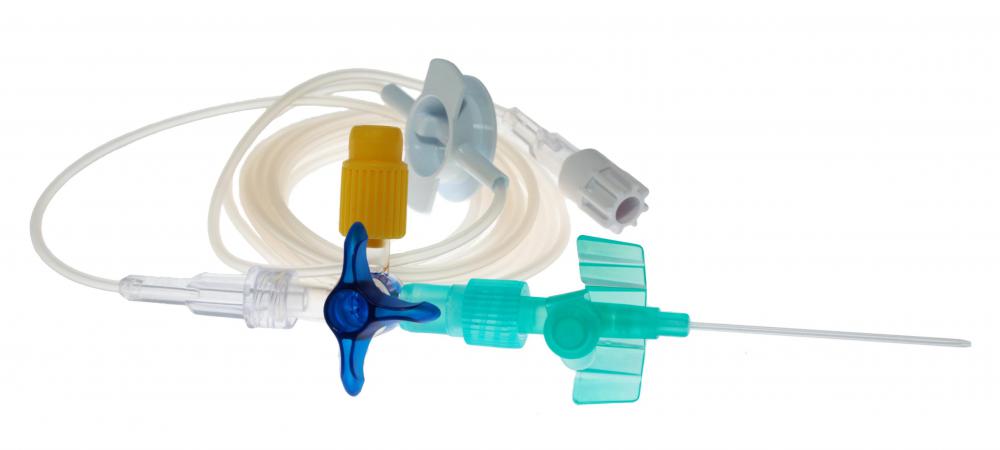At WiseGEEK, we're committed to delivering accurate, trustworthy information. Our expert-authored content is rigorously fact-checked and sourced from credible authorities. Discover how we uphold the highest standards in providing you with reliable knowledge.
What are the Most Common Complications of Catheterization?
Complications of catheterization depend on the area of the body in which the catheter is placed and whether the catheter is in place for a short while or long term. The list of common complications of catheterization includes infection, tissue injury, blockage, damage to blood vessels, blood poisoning and allergies. Infection is a universal complication of the types of catheters placed internally.
Urinary tract catheters are either inserted into the urethra or placed externally around the penis to drain the bladder. For internally placed catheters, the most common complications of catheterization are urinary tract infections, blockage, and tissue injuries. Blockage is caused by mineral salts produced by microorganisms interacting with urine deposits and can cause discomfort. Indwelling catheters can also cause blood poisoning, kidney infections and kidney damage, though these side effects are rarer. The latex in catheters that wrap around the penis can cause allergic reactions in some patients.

Catheters are also inserted into the venous system to carry nutritious fluids and medication. Catheters can be inserted into the peripheral venous system, such as in the hand, to transfer intravenous fluids or medication. A catheter can also be a central venous catheter, which is placed into a major vein near or in the heart. The most common complications of central venous insertion are infection, blood clot formation and tube blockage. Peripheral venous catheters suffer the same issues as central venous catheters but are more likely to cause phlebitis, an inflammation of the vein, than central venous catheters.

Catheters can also be threaded through blood vessels into the heart. In this case, the doctor may cause pain and bleeding on inserting the tube. While the pain may be as light as normal discomfort, it also can be the result of accidental damage to the blood vessel — damage that may be as extensive as holes poked in the vessel when the doctor is maneuvering the catheter through to the heart. A patient may also be allergic to the dye used in the cardiac catheterization procedure.

A baby can have an umbilical catheter inserted if he needs constant nutritious fluids, medicine, or if his doctor needs to take regular blood samples. Infection is one of the most common complications of catheterization in such situations. The umbilical catheter may also restrict blood flow to one of the baby's limbs or organs. A blood clot also can form in the tube and potentially be fatal.
AS FEATURED ON:
AS FEATURED ON:














Discuss this Article
Post your comments